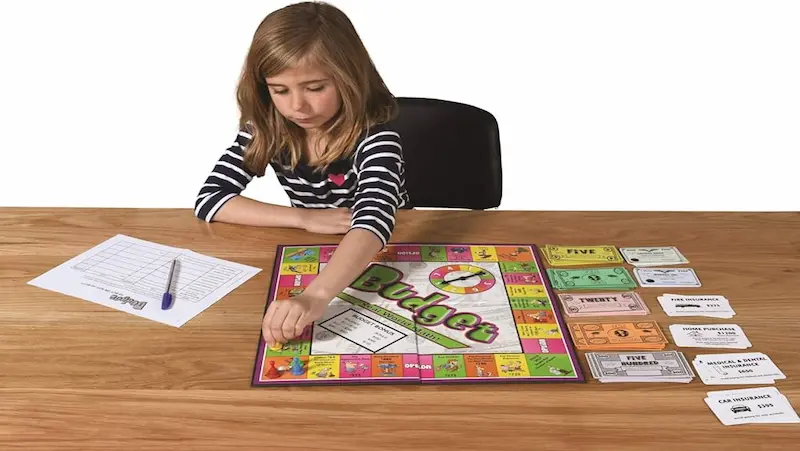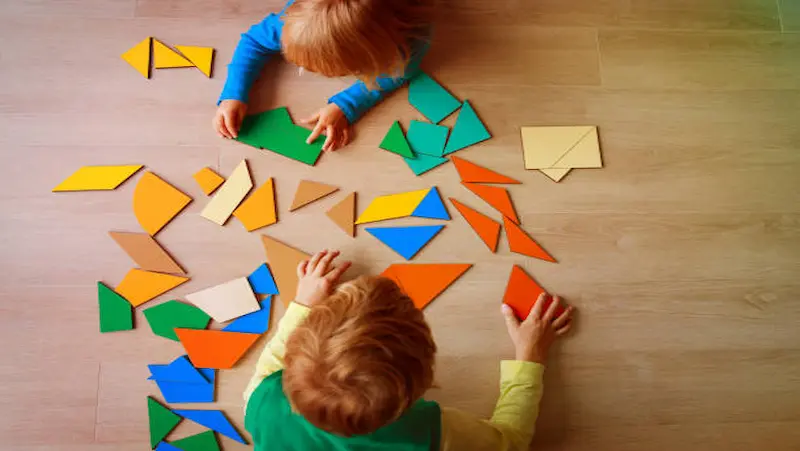In today’s rapidly evolving world, it’s essential to equip our youngest minds with a fundamental understanding of banking concepts. However, engaging in teaching banking to elementary students on this topic can be quite a challenge. Traditional approaches often fall short of sparking their interest and curiosity. Therefore, the need for creative methods to make banking concepts not only accessible but genuinely engaging for these young learners has become paramount. This quest for innovative and captivating educational strategies is crucial, as it empowers our future generation with the financial literacy they need to navigate the modern world with confidence.
Table of contents
The Magical Money Tree:
In a world where money doesn’t grow on trees, wouldn’t it be fantastic if it did? Well, while we can’t literally pluck dollar bills from branches, there’s a creative and enjoyable way to make some extra cash that we like to call the “Magical Money Tree”!
Imagine a whimsical garden where you nurture a tree that produces money. It might not be real, but the rewards are! This delightful concept combines a bit of imagination with practicality. Here’s how it works:

Plant the Seeds of Opportunity
To start your journey with the Magical Money Tree, you’ll need to plant the seeds of opportunity. In this case, these seeds are your skills, talents, and hobbies. Do you have a knack for photography, writing, or crafting? Maybe you’re a master at baking or gardening. Whatever your passion, that’s the seed you plant.
Water Your Talents
Like any tree, your Money Tree needs care and attention. Water it by honing your skills and continuously improving. Take courses, practice, and seek opportunities to grow. The more you nurture your talents, the stronger your Money Tree will grow.
Harvest the Fruits of Your Labor
As your Money Tree grows, it starts bearing fruit in the form of opportunities. These opportunities can be freelance gigs, side projects, or even turning your hobby into a small business. By sharing your talents and passions with the world, you’re reaping the benefits.
Give Back to the Community
The Magical Money Tree doesn’t just benefit you; it can also provide for others. Consider using your earnings to help someone in need, support a local cause, or invest in your community. By giving back, you’re ensuring your Money Tree continues to thrive.
Watch Your Money Tree Blossom
Over time, you’ll watch your Money Tree blossom with the fruits of your labor. It’s like watching a garden grow and bloom, only the rewards are a bit more tangible.
Savings Jar Adventure:
The Savings Jar Adventure is a fun and interactive way to introduce the concept of saving to kids. It’s not just about learning to stash away coins; it’s an exciting journey that can ignite the saving spirit in your child. Here’s how to get started:

Step 1: Choose a Savings Jar
The first step is selecting a savings jar. It can be a simple glass jar, a piggy bank, or any container of your child’s choice. Make sure it’s transparent, so your child can see the money accumulating inside, which adds an element of excitement to the process.
Step 2: Set a Savings Goal
Sit down with your child and discuss what they’d like to save for. It could be a toy, a special treat, or even a longer-term goal like a new bicycle. This goal will serve as motivation throughout the Savings Jar Adventure.
Step 3: Earn and Allocate Money
Now, encourage your child to earn money through age-appropriate tasks, like chores or receiving an allowance. For every bit of money they earn, they can allocate a portion to their savings jar. Make it clear that a portion of what they earn should always go into the jar.
Step 4: Track Progress
Create a chart or visual representation that shows the progress towards their savings goal. This can be a simple piece of paper where they can color in sections or place stickers as they get closer to their goal. This way, they can see their efforts paying off.
Step 5: Celebrate Milestones
When your child reaches certain milestones or saves a significant amount of money, celebrate their achievements. It could be a small treat, a special outing, or a praise-filled family moment. These celebrations make saving enjoyable and reinforce the importance of reaching goals.
Step 6: Encourage Patience
As your child gets closer to their savings goal, they’ll learn the value of patience and delayed gratification. Emphasize that good things come to those who wait, and that saving money is an important skill for their future.
Play Store Economics:

The Setup:
Imagine a classroom transformed into a bustling marketplace, with colorful shelves stocked with various “goods.” These goods could be anything from toys to stationery, each with a price tag in play money. Every student starts with a set amount of play money – let’s call it their “budget.”
Buying and Selling:
The students, now budding entrepreneurs and savvy consumers, roam the store, making decisions about what to buy and when. They exchange their play money for items that pique their interest, bargaining and haggling like real shopkeepers and customers.
On the flip side, some students become shopkeepers, learning the art of setting prices and making sure they make a profit. They have to manage their “inventory” and balance supply and demand.
The Economics Lessons:
1. Budgeting: This activity teaches students to allocate their limited resources wisely. They quickly realize that they can’t buy everything they want, and choices must be made.
2. Supply and Demand: As shopkeepers, students understand the concept of supply and demand intuitively. They learn to adjust prices based on how popular or rare certain items are.
3. Pricing Strategies: Those taking on the role of shopkeepers must learn about setting competitive prices to attract buyers and still make a profit.
4. Opportunity Cost: Every purchase made represents an opportunity cost – what students could have bought with the same money instead. This concept becomes crystal clear during this playful economic exercise.
5. Math Skills: Calculating prices, making changes, and tracking expenses are practical math applications that students often find more engaging when they have a stake in the outcome.
Real-World Relevance:
Play Store Economics isn’t just fun and games; it’s a valuable tool for preparing students for activities for financial literacy in the real world. They learn about earning, spending, saving, and the consequences of their financial decisions, all in a safe and controlled environment.
By making mistakes with play money, students can avoid making costly financial blunders in adulthood. It’s an early lesson in responsible money management and helps foster a lifelong habit of wise financial decision-making.
Budgeting Board Game:
Are you ready to embark on a budgeting adventure? The Budgeting Board Game is here to help players of all ages understand the basics of managing money in a playful and interactive manner.

Components Needed
Before you begin, you’ll need a few materials:
1. Game board (create your own or download from the internet)
2. Playing pieces (coins, buttons, or small toys)
3. Fake money (use monopoly money or create your own)
4. Expense cards (rent, groceries, entertainment, etc.)
5. Income cards (allowance, salary, etc.)
6. A pair of dice
7. A pen and paper for each player
Objective
The objective of the game is simple: manage your finances wisely to be the first player to save a specified amount of money. This goal helps players understand the importance of saving and budgeting.
Game Rules
1. Set up the game board with spaces for income, expenses, and savings.
2. Players start with a certain amount of fake money and an income card, representing their monthly income source.
3. Each player takes turns rolling the dice and moving their piece on the board. Landing on an “Income” space means you receive your monthly income while landing on an “Expense” space means you must pay the amount specified on the expense card.
4. Keep track of your income, expenses, and savings on a piece of paper. This encourages players to budget their finances effectively.
5. The game continues until one player saves the predetermined amount, making them the winner.
Learning Through Play
The Budgeting Board Game teaches players several valuable lessons about budgeting:
1. The importance of balancing income and expenses.
2. Making choices about spending and saving.
3. Dealing with unexpected expenses (which can be represented as “Chance” cards in the game).
4. The satisfaction of reaching a savings goal.
Money Math Puzzles:

Puzzle 1: The Mysterious Multiplication
Imagine you have $500, and each month it grows by 10%. How much will you have after six months? Grab your mental calculator and uncover the magic of compound growth. Hint: It’s not a simple $50 increase each month!
Puzzle 2: The Elusive Exchange Rate
You’re planning an international vacation, and the exchange rate is 1.25 USD to 1 Euro. How much would you get in Euros if you exchanged $200? Dive into the world of cross-currency calculations and discover how to stretch your dollars across borders.
Puzzle 3: The Budgeting Conundrum
You have a monthly budget of $1,000, and you allocate 30% to rent, 20% to groceries, and the rest for miscellaneous expenses. Can you figure out the exact amounts for each category? Unravel the percentages and distribute your budget wisely.
Puzzle 4: The Savings Challenge
If you save $5 on the first day of the month, $10 on the second day, $15 on the third day, and so on, how much money will you have saved by the end of the month? Brace yourself for some sequential addition and witness the power of a consistent saving strategy.
Puzzle 5: The Investment Maze
You invest $1,000 at an annual interest rate of 5%. After how many years will your investment double? Delve into the world of exponential growth and unveil the secrets of compound interest.
In the tapestry of lesson plans on money math, each puzzle is a thread weaving a story of financial acumen. These challenges not only sharpen your numerical skills but also inject an element of excitement into an often mundane subject.
Conclusion:
In conclusion, introducing elementary students to the world of banking through creative approaches has proven to be an enriching and engaging educational experience. By incorporating interactive games, hands-on activities, and even field trips to local banks, educators have successfully transformed a potentially dry subject into a dynamic learning adventure. These methods not only demystify complex financial games for students concepts but also instill in young minds a foundational understanding of the role banks play in our daily lives. As we witness the sparkle of curiosity in the eyes of these students, it becomes evident that these creative teaching approaches not only impart knowledge but also plant the seeds of financial literacy projects that will undoubtedly benefit them in the years to come.
To get your hands on more educational and free resources on coding for kids, robotics for kids, financial education for kids, etc., do check out the BrightCHAMPS Page now!
To get your hands on more such articles, educational content, and free resources on coding for kids, robotics courses, game development, etc., check out the BrightCHAMPS Blog Page now!
Frequently Asked Questions
A1: Consider games like “Banker’s Challenge” where students simulate managing a bank, or “Money Bingo” to reinforce currency recognition and basic financial terms.
A2: Absolutely! Try activities like “Coin Sorting Relay” to teach denominations or “DIY Piggy Banks” for a fun, crafty approach to savings.
A3: Take students on a “Grocery Store Budgeting” trip, allowing them to plan and shop within a budget, linking everyday decisions to financial responsibility.
A4: Engage them with “Saving Jars” where they allocate portions of their allowance for short-term goals, fostering the concept of delayed gratification.
A5: Organize a “Banker for a Day” activity, allowing students to take on roles like tellers, customers, and managers to experience various aspects of a bank’s operation firsthand.


 We are an army of educators and passionate learners from BrightChamps family, committed to providing free learning resources to kids, parents & students.
We are an army of educators and passionate learners from BrightChamps family, committed to providing free learning resources to kids, parents & students.








